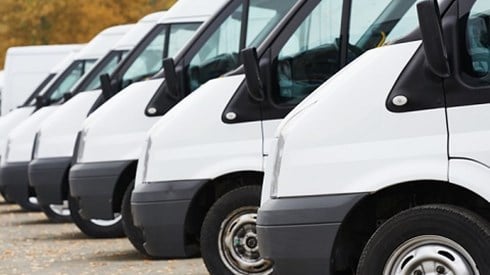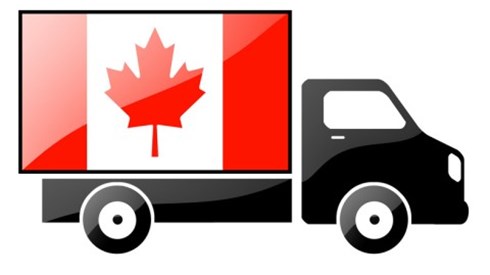Amazon Courier Captives: A Solution That Really Delivers

Nicholas Gurgone | January 26, 2022

Editor's Note: In the following piece, Pinnacle Actuarial Resources' Nicholas Gurgone shares his thoughts on how Amazon's delivery model is an example of unique loss risks well suited to captive insurance.
Amazon founder Jeff Bezos's recent private flights into space have launched probably a thousand headlines. The logistical feat of private space flight is certainly impressive, regardless of one's position on billionaire space exploration. Closer to home, on planet Earth, however, his company presides over another logistical marvel.
As you read this, you could select from among the estimated millions of items from Amazon and have your selection at your doorstep within 48 hours. The company's shipping network is truly and historically impressive and is reportedly a major contributor to Amazon's success and that of the US economy during COVID-19. (See Michael Mandel and Elliott Long, "Investment Heroes 2021: Capital Spending during the Pandemic," Progressive Policy Institute, June 1, 2021.) But Amazon's delivery model also creates unique loss risks, which the captive insurance industry has proven is well suited to handle in a more cost-effective way than the commercial insurance market.
You've seen Amazon's so-called last-mile drivers in large, dark-blue vans with the company's smile logo emblazoned on the side. These drivers, who according to the Amazon website operate as independent owner-operators exclusively for Amazon, are a unique and growing class of risk.
To understand who these last-mile drivers are and what makes Amazon's delivery model risks unique, let's break down how the network functions within the United States.
From Amazon local distribution, or "fulfillment," centers, Amazon uses an array of decentralized, independent companies, known as "last-mile drivers," or "Delivery Service Partners (DSPs)," to deliver the package to the customer's front door. DSPs each have their own fleet of vans and employees.
Since these last-mile companies are independent contractors, Amazon can benefit in a number of financial- and insurance-related ways, including less direct liability for the actions of the DSPs. (See "Reports of Amazon Drivers Engaging in Dangerous Behavior Behind the Wheel," JD Supra, December 17, 2021.) While Amazon benefits greatly from a dedicated network of DSPs, this network is intentionally connected to, but not owned by, Amazon. In fact, Amazon's DSP program offers tools such as financing to help DSPs form and succeed, according to the Amazon website. One challenge for these independent DSPs is their responsibility for purchasing their own insurance. Clearly, 2-day delivery expectations can result in tight time frames for these drivers, especially during holidays and other busy periods. It is not hard to imagine that the intense nature of such short delivery windows increases stressors on drivers and results in reckless driving judgments and behaviors, including speeding. (See David Ingram and Jo Ling Kent, "Inside Amazon's Delivery Push: Employees and Drivers Say an Overworked System Is Lax on Safety as Packages Pile Up," NBCNews.com, November 27, 2019.)
The long-haul trucking industry also runs on tight deadlines that can result in riskier driving behavior. One key difference is that while most of a long-haul trucker's time on the road is spent on open freeways, last-mile drivers operate more frequently on urban and suburban streets, with a greater congestion of vehicles, pedestrians, and other hazards.
Another distinction between long-haul and last-mile trucking risks is the training of the drivers themselves. In most states, long-haul truckers are required to obtain the highest level of commercial driver's license (CDL), a Class A CDL. While last-mile drivers are still required to have a CDL, most jurisdictions allow a Class B CDL, which requires less-intensive testing and consequent licensing. The high demand for last-mile drivers may mean hiring drivers with less experience than would be preferred in long-haul trucking, out of sheer necessity.
The distinction is borne out by data, going back as far as 2019, which suggests that Amazon's delivery drivers have been injured at a significantly higher rate than other delivery drivers. (See Katherine Anne Long, "Amazon Drivers Injured Far More Often Than the Company's Warehouse Workers; See the Charts," Seattle Times, June 1, 2021.) In addition, the boom in online shopping caused by the COVID-19 pandemic and corresponding lockdowns resulted in higher growth rates for Amazon—and more business, deliveries, and miles driven for DSP drivers. (See Annie Palmer, "How Amazon Managed the Coronavirus Crisis and Came Out Stronger," CNBC, September 29, 2020.)
Businesses and industries experiencing rapid growth often see worsening property-casualty claims experience. This can be attributed to staffing shortages of qualified employees (e.g., DSP drivers, perhaps during the holiday rush), difficulty scaling operations, and expanding risk management and loss control services to a growing organization. Amazon's network of last-mile companies remains in a period of sustained rapid growth. (See Matt Leonard, "Amazon Insources Logistics with a Growing Network of Delivery Stations," Supply Chain Dive, April 27, 2021.) Consequently, there is likely pressure on DSP owners to focus on safety and to control claims and insurance costs. Every last-mile driver accident could easily result in combinations of a third-party auto liability, a first-party auto physical damage, and workers compensation claims. As a result, the market premiums DSPs are quoted from commercial insurers for these lines can be extremely expensive.
A hard insurance market, like the one that the last-mile industry is facing, is common with relatively new risks that have clear high-risk characteristics. It is often the case that newer industries and risks are charged conservative premiums from commercial insurers during early years of their operations. Rates at this level often persist until the insurers feel more comfortable about that risk and acquire a better understanding of it. In addition, some insurers simply won't cover newer risks at all, causing an imbalance between supply and demand, which further inflates premiums. In those situations, the captive insurance market often has filled the void of affordable insurance left by the commercial market. A homogenous group captive, covering only Amazon last-mile delivery companies, would be a strategic and cost-effective insurance solution for these companies. So how would and could it work in this context?
Commercial insurers will rely heavily, perhaps exclusively, on manual rates for determining premiums for a DSP. That often excludes any company-specific loss history data, even though many of these companies have data and have now been in existence for several years.
Better-than-average performing last-mile companies are overcharged as a consequence and subsidize worse-than-average performers within a commercial insurer's book of business. A better-than-average last-mile company would be served well to request a funding quote from a group captive, often known as a "loss pick." The actuaries for the group captive would consider the company's better-than-industry-average loss experience and blend it with industry averages to a proper level until the company's own data was sufficiently credible. Even partially considering company loss experience in the loss pick typically results in a more competitive quote than the commercial market. But can this type of captive insurance be as reliable?
The short answer is certainly.
These types of group captives are usually fronted by highly rated large commercial insurers. Fronting insurers often also provide reinsurance protection for both large individual claims and aggregate claims well in excess of expectations. The strength of the fronting insurer increases the confidence that group captive members have in their insurance program. Furthermore, most group captives have assessable features that result in members with worse-than-expected claims experience, resulting in more funds to pay claims. Group captives are also almost always run by experienced industry professionals, respected within the profession for their experience with unique risks with captives and, specifically, with group captives.
But what about DSPs with worse-than-average claims experience? Can they benefit from a group captive solution? Again, the answer is certainly.
These worse-than-average DSPs will have more at risk due to the premium assessment feature of group captives. They also have far more to gain because of the potential for dividends. These incentives often result in businesses that are much more motivated to control their claims costs. In addition, the requirement that member-owners participate in safety and loss control workshops can be a powerful tool to improve DSP safety culture. DSPs that demonstrate improved claims experience can also expect to see steady decreases in their premium costs per vehicle.
An additional and sometimes overlooked benefit for captive members is focused expertise. Having a captive that specializes in one type of risk allows for the captive's risk control team to drill down into and understand the details of the members' risks and become extremely knowledgeable about managing them. This can improve loss experience over time. One interesting aspect of the Amazon DSP program is the volume of useful risk management data available to all DSPs. Group captives are well equipped to leverage this data into useful risk management tools.
The commercial insurance market for last-mile delivery companies can be expensive and disproportionate to claims experience for DSPs with better-than-average safety and risk controls. A group captive has the potential to provide benefits—such as lower premiums and industry best-practice claims, safety, and loss prevention protocols—all focused on reducing claims costs and, ultimately, insurance costs. In short, captives are a solution that can really deliver.
Nicholas Gurgone | January 26, 2022





